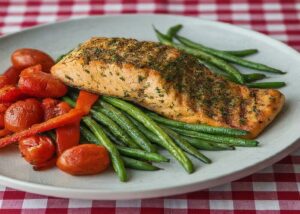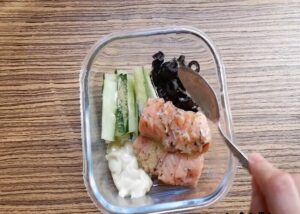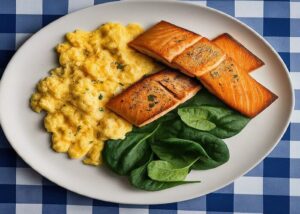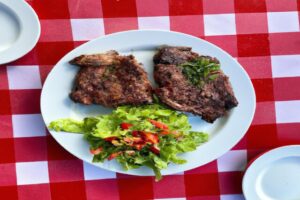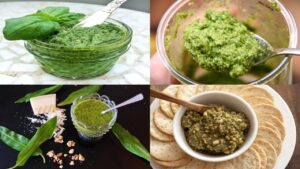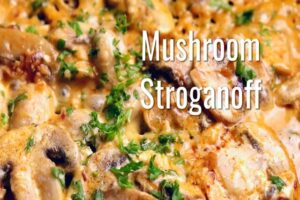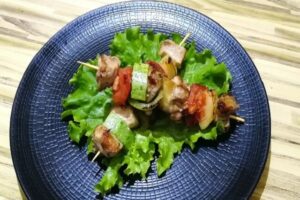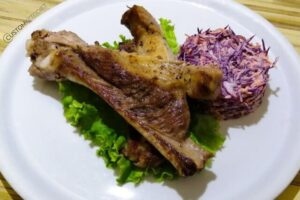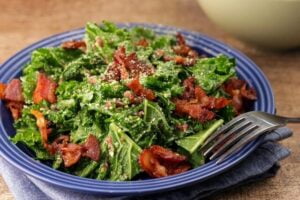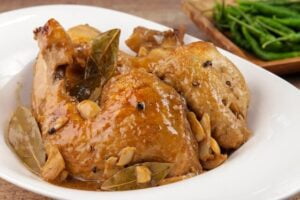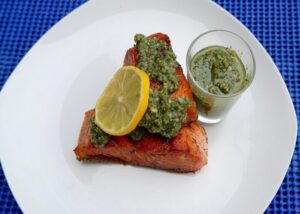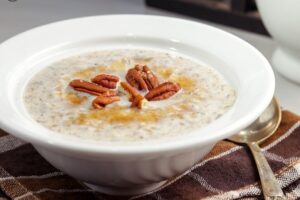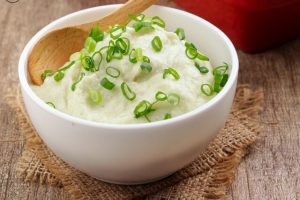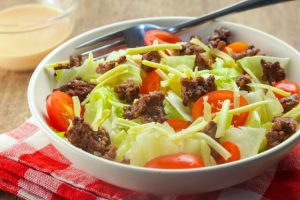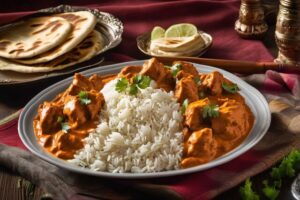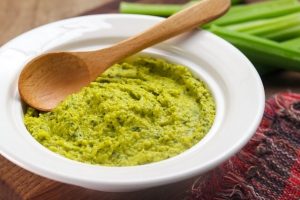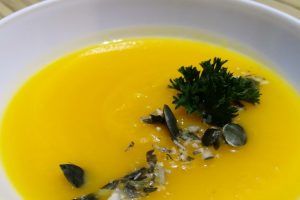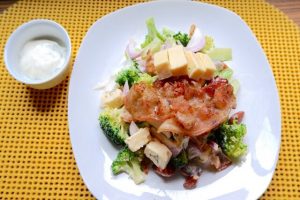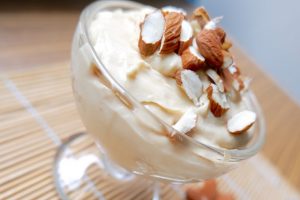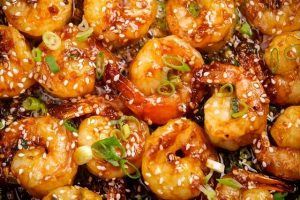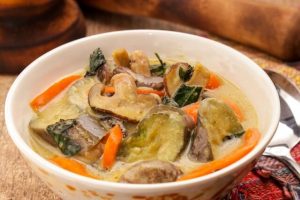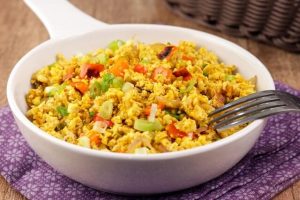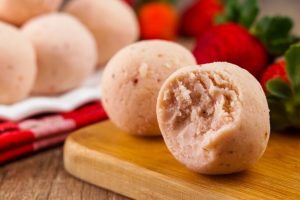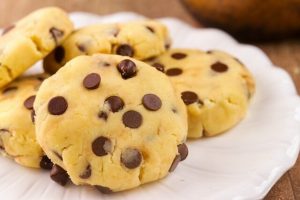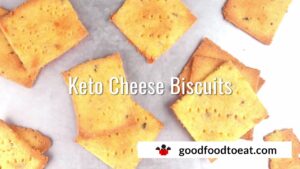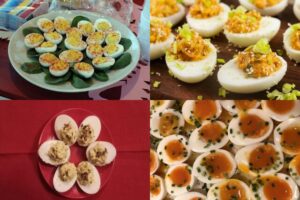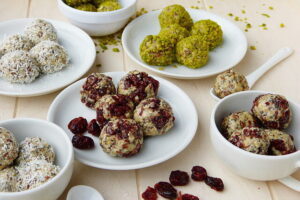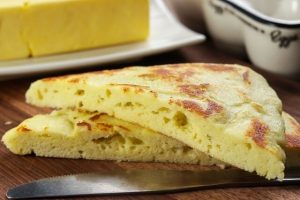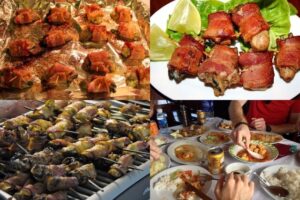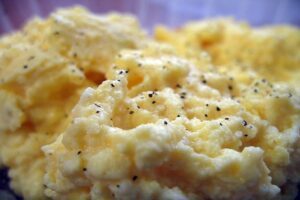Unlock the Power of the Keto Diet: Your Ultimate Guide to Achieving a Healthy and Sustainable Lifestyle.
Are you ready to unlock the power of the keto diet and embark on a journey towards a healthy and sustainable lifestyle?
Look no further, because this ultimate guide has got you covered!
The keto diet has gained immense popularity in recent years, and for good reason. By drastically reducing your carbohydrate intake and increasing your consumption of healthy fats, you can train your body to enter a state of ketosis.
This metabolic state allows your body to burn fat for fuel, leading to weight loss, increased energy levels, and improved mental clarity.
But the benefits of the keto diet go beyond just shedding that extra weight.
It promotes a sustainable lifestyle by encouraging the consumption of whole foods such as lean meats, fish, nuts, seeds, and plenty of vegetables.
Say goodbye to processed junk food and hello to nutrient-dense meals that nourish your body from within.
In this comprehensive guide, we will delve into everything you need to know about the keto diet – from understanding how it works to practical tips on meal planning and navigating social situations.
You’ll learn how to make smart food choices that align with your health goals while still enjoying delicious meals that satisfy your taste buds.
So why wait? Get ready to unlock the power of the keto diet and transform your life into one that is not only healthy but also sustainable in the long run.
Let’s embark on this exciting journey together!
Introduction: What is the Keto Diet and How Does it Work?
Are you ready to embark on a journey towards a healthier lifestyle? Look no further than the Keto Diet!
In this section, we’ll dive into what exactly the Keto Diet is and how it works its magic.
The Keto Diet, short for ketogenic diet, is a low carb, high fat eating plan that has gained immense popularity in recent years.
By drastically reducing your carbohydrate intake and increasing your consumption of healthy fats, the body enters a state called ketosis.
During ketosis, your body switches from using glucose as its primary fuel source to burning stored fats instead.
This metabolic shift not only helps with weight loss but also provides a wide range of health benefits such as improved mental clarity, increased energy levels, and enhanced blood sugar control.
So get ready to say goodbye to those carb-heavy meals and embrace the delicious world of healthy fats.
Let’s explore the ins and outs of the Keto Diet and discover how it can transform your life for the better!
The Benefits of Embracing the Keto Lifestyle for Weight Loss and Overall Health
Are you ready to embark on a transformative journey towards a healthier and slimmer you?
Look no further than the incredible benefits of embracing the keto lifestyle!
The keto diet has gained immense popularity in recent years, and for good reason.
Not only does it offer an effective way to shed those stubborn kilos, but it also provides numerous health benefits that can improve your overall well-being.
- Promotes weight loss;
- One of the most remarkable advantages of adopting the keto lifestyle is its ability to promote weight loss.
By drastically reducing your carbohydrate intake and increasing your consumption of healthy fats, your body enters a state of ketosis.
During ketosis, your body becomes incredibly efficient at burning fat for fuel instead of relying on glucose from carbohydrates. This means that you can say goodbye to those unwanted kilos and hello to a slimmer, more confident version of yourself.
- Increased energy levels and improved mental clarity;
- But weight loss is just the tip of the iceberg when it comes to the benefits of going keto.
Many individuals report experiencing increased energy levels, improved mental clarity, and enhanced focus throughout their day.
This is because ketones, which are produced during ketosis, provide a steady source of energy for both your body and brain.
- Helps improve your overall health;
- Moreover, following a ketogenic diet has been shown to have positive effects on various health markers.
It can help regulate blood sugar levels, reduce inflammation in the body, lower cholesterol levels, and even improve cardiovascular health.
By embracing this lifestyle change, you are not only working towards achieving your weight loss goals but also taking significant steps towards improving your ov
- Helps improve your overall health;
If you’re new to the world of keto or unsure where to start on this exciting journey, fear not!
There are countless resources available online that provide guidance for beginners.
From meal plans and recipes tailored specifically for those following a ketogenic diet to informative articles and support communities – everything you need is at your fingertips.
So why wait any longer? Embrace the transformative power of the keto lifestyle today and experience firsthand its incredible benefits for weight loss and overall health. Get ready to embark on a journey towards a healthier, happier you!
Busting Common Myths About the Keto Diet: Separating Fact from Fiction
Are you ready to separate fact from fiction when it comes to the keto diet?
Let’s bust some common myths and debunk misconceptions about this popular eating plan.
It’s time to uncover the truth about ketogenic eating!
Myth #1: The keto diet is a fad diet.
Fact: While it may seem like a trendy diet, the keto diet has been around for decades.
It was initially developed as a therapeutic approach for epilepsy patients.
Today, it has gained popularity for its potential weight loss benefits and improved mental clarity.
Myth #2: The keto diet is all about eating bacon and butter.
Fact: While high-fat foods are a staple in the keto diet, it's not all about indulging in unhealthy fats.
The focus is on consuming healthy fats from sources like avocados, nuts, and olive oil.
It's important to maintain a balanced approach by including plenty of vegetables and protein sources as well.
Myth #3: The keto diet is too restrictive.
Fact:Yes, the keto diet does require cutting out certain food groups such as grains and sugars.
However, there are still plenty of delicious options available within these restrictions.
From low-carb vegetables to protein-rich meats and dairy products, there are numerous ways to create tasty meals while following the ketogenic eating plan.
Myth #4: The keto diet is not sustainable long-term.
Fact:While some people may choose to follow the keto diet temporarily for weight loss goals or other health reasons, others find that they can sustain this way of eating long-term with proper planning and variety in their meals.
It's all about finding what works best for your body and lifestyle.
Now that we’ve separated fact from fiction, you can make informed decisions about whether the keto diet is right for you.
Remember to consult with a healthcare professional before making any significant changes to your dietary habits. Happy debunking!
What should I eat on the Keto Diet?
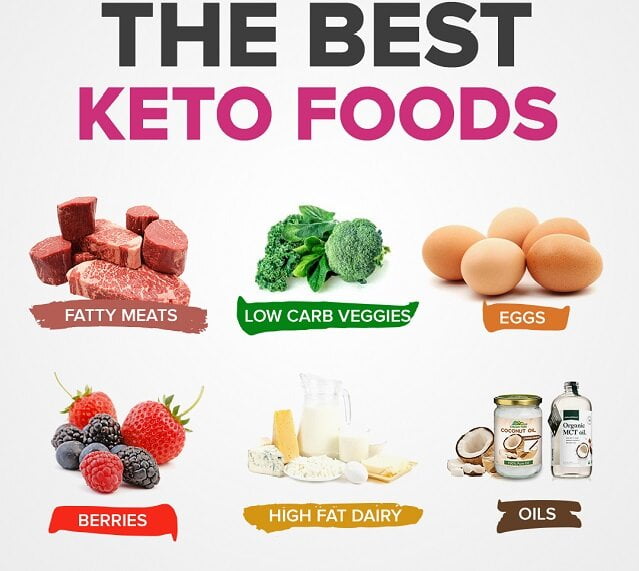
Craving carbs? Ditch the bread, grab this guide!
Unleash the keto revolution within and unlock a world of delicious, fat-burning delights. Ditch the confusion, ditch the carb crash, and dive into our ultimate “What should I eat on the Keto Diet?” guide.
Forget generic lists and one-size-fits-all plans. We’re serving up a personalized feast with the “Custom Keto Diet Food List” – your secret weapon to conquer cravings, crush keto goals, and savour every bite.
So, buckle up, butter lovers, because this is your roadmap to a healthier, happier, and undeniably tastier you!
Fats become your fuel, proteins play your anchor, and carbs hum a lullaby in the background.
Dive into Deliciously Natural: Your Ultimate Keto Food List
Embarking on the keto journey can feel like navigating a grocery store blindfolded.
Fear not, carb-conscious comrades! Ditch the processed imposters and unlock a vibrant world of all-natural, keto-friendly ingredients waiting to tantalise your taste buds.
Our curated food lists are your passport to a healthy, satisfying keto adventure, brimming with fresh, unadulterated goodness.
Keto Carbs.
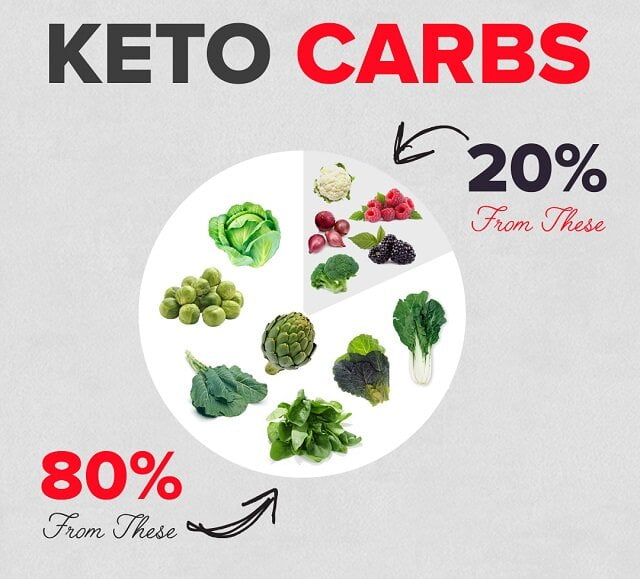
There is what we call the 80/20 rule when it comes to choosing your carbs for your meals.
For the 80% you should select the leafy greens such as kale, asparagus, lettuce, spinach, chard, etc.
Those vegies that have the lowest carb sources, while the remaining 20%, must be from other moderate carb vegetables such as, cabbage, broccoli, cauliflower, yellow onions, etc.
Fresh Vegetables
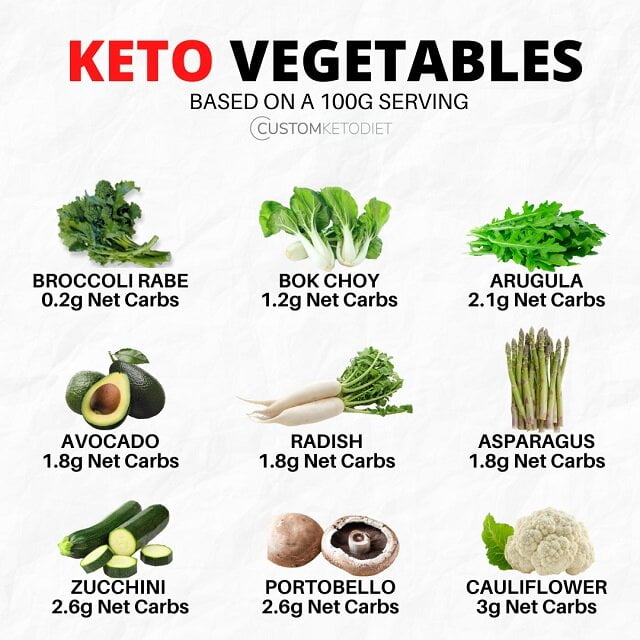
For these foods, try to opt for organic ones or better yet, grow your own to avoid all pesticide toxins.
Avoid starchy vegetables (corn, sweet potatoes, potatoes, peas, and winter squash) that are high in carbs.
Instead, opt for moderate intake of sweet vegetables (squashes, peppers, tomatoes, and carrots).
Vegetables that make it to the list are:
- CeleryVCollard Greens
- Onions (high in sugar; moderate intake)
- Alfalfa Sprouts
- Beet Greens
- Broccoli
- Spinach
- Dandelion Greens
- Bamboo Shoots
- Cabbage
- Brussels sprouts
- Garlic
- Mushrooms
- Shallots
- Kale
- Bok Choy
- Sauerkraut
- ChivesCelery Root
- Swiss chard
- Cauliflower
- Snow Peas
- Bean Sprouts
- Olives
- Cucumbers
- Salad greens and lettuces:
Romaine, Arugula, Fennel, Bok Choy, Boston lettuce, Endive, Mache, Escarole, Sorrel, Radicchio, Chicory Water Chestnuts - Turnips
- Scallions
- Dill Pickles
- Leeks
- Radishes
- Chard
- Asparagus Spears
Proteins.
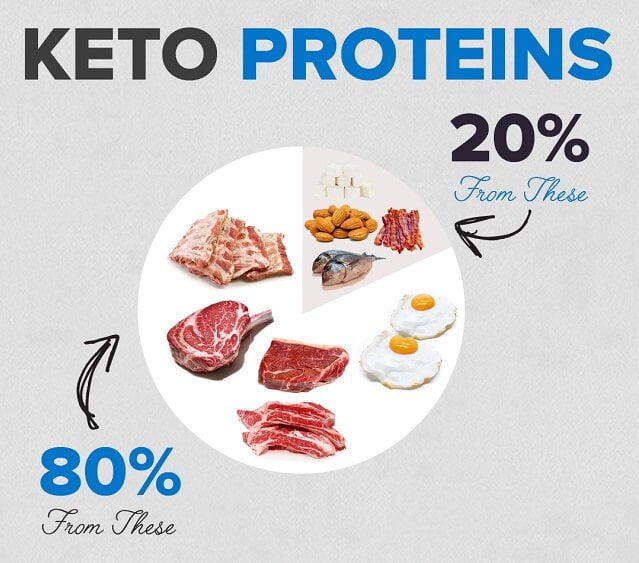
Proteins should come from fatty sources, for most of the time (80%), such as eggs, bacon, pork, steak, ground beef and lamb.
The remaining 20% should be coming from cheese, chicken, nuts and fish.
-
Poultry:
Free-range Cornish hen, quail, goose, pheasant, chicken, duck, and turkey.
-
Fish and Seafood:
Cod, tuna, hoki scrod, anchovies, mackerel, flounder, catfish, trout, mahi-mahi, sole, sardines, salmon, halibut, snapper, and calamari.
Always try to opt for wild caught fish to avoid toxins present in commercially reared fish.
-
Grass-fed Meat:
These include Beef, venison, goat, and Lamb.
Meat from wild animals are also acceptable; however, avoid sausages and meats that come with sugary sauces and those covered in breadcrumbs.Choose the chunks of meat with more fat since they contain less protein and more fat.
-
Pork:
Boston butt, Pork chops, ham pork, and loin.
When choosing ham, be on the lookout for added sugar. -
Bacon and Sausages:
Preferably, you should buy these at specialty health food stores.
If this is not possible, always read the labels to avoid those which contain fillers such as soy or sugars. -
Canned Tuna and Salmon:
Canned tuna and salmon are okay to consume while you are on the keto diet.
However,avoid seafood rich in fillers, crumbed/breaded seafood, and fried seafood. -
Vegetable Protein Powders:
Protein supplements such as whey protein, hemp protein, pea, and rice are acceptable.
-
Whole Eggs:
This includes chicken eggs, and quail eggs which you can prepare through any mean desired; fried, soft or hard boiled, deviled, scrambled, or omelette style.
-
Shellfish:
Oyster, mussels, lobster, shrimp, crab (not imitation crab that contains additives), clams, scallops, and squid.
-
Nuts
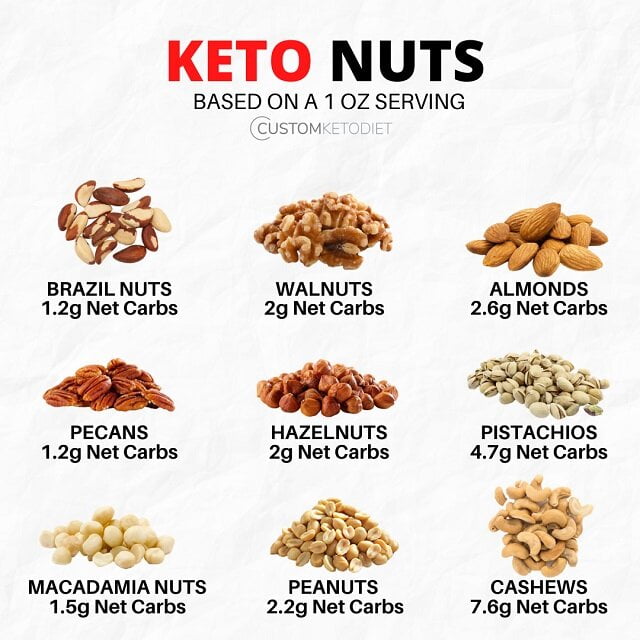
Cracking the Carb Code of Nuts:Skip the carb counting with almonds, macadamias, pecans, and walnuts.
These nut all-stars keep the carbs on lockdown, letting you munch freely in moderation.
Want more variety? Just be mindful of carb content in chestnuts, pistachios, and cashews.
Think of them as occasional treats, savoured with appreciation.Now, about that fat: nuts are nature's powerhouses!
But don't worry, it's mostly the good kind.
Most nuts boast a bounty of unsaturated fats, with walnuts and pine nuts leaning towards polyunsaturated champions, while almonds, pistachios, pecans, and hazelnuts rock the monounsaturated groove.
Brazil nuts, cashews, and macadamia nuts, however, hold a bit more of the saturated kind, so enjoy them like treasured gems.So go nuts, but do it wisely!
Choose the low-carb kings for everyday snacking, and savour the higher-carb crew in measured bites.
Your body will thank you for the delicious, nutritious boost! -
Nut flours:
These are necessary because while you areon this diet, it does not mean baking no longer fits into your life.
Nut flours such as almond flour will suffice.
Fats and Oils
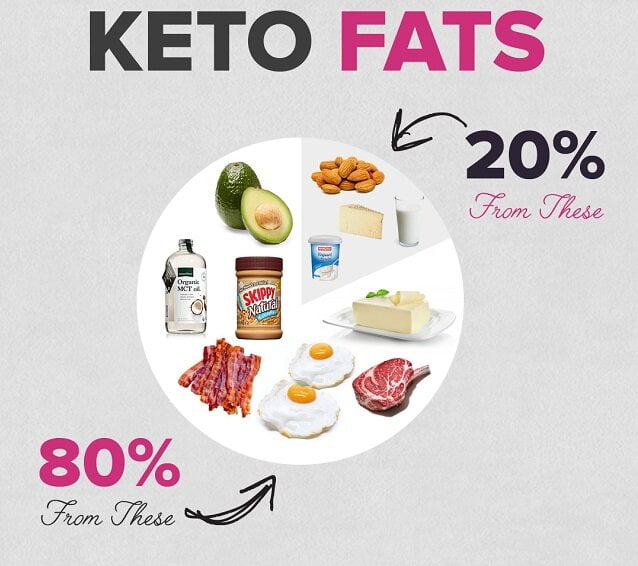
80% of the time, fats should come from healthy fat sources like avocado, MCT oil, butter, eggs, fatty meats, macadamia oil.
While the remaining 20%, it should come from other fat sources like chia seeds, milk, flax seeds, nut butters, nuts, etc.
But remember, these options from the 20% must be consumed in moderation as the carbs can add up easily.
Because these are your main sources of energy while you are on this diet, go for the types of fats and oils you enjoy.
These may include:
- Omega 3 fatty acids from fish such as tuna, shellfish, and salmon
- Fish supplements or krill
- Monounsaturated fats such as egg yolks, avocado, and butter
- Vegetable oils such as olive oil, coconut oil
- Non-hydrogenated beef tallow, ghee, and lard.
- Duck and chicken fat
In order to make it easier to stick to this diet, be aware of which types of fat your body can tolerate.
Many people seem to have zero or very low tolerance of vegetable oils and mayo.
This may be a good thing because most of these oils are rich in omega 6 fatty acids - the kind that is bad for your body’s cholesterol levels.
In this case, work with the listed monounsaturated fats to reduce the inflammatory effect brought about by polyunsaturated fats.
Nevertheless, work to balance both fats because you cannot survive on monounsaturated fats alone (You need a lot of fats and oils).
Even then, avoid hydrogenated fats such as margarine to reduce the amount of trans-fats you eat.
Dairy Products
- Mascarpone cheese
- Unsweetened whole milk yogurt (limit intake of this type of yoghurt because it is a little high in carbs)
- All soft and hard cheeses
- Cream cheese
- Full fat sour cream (do not forget to check for additives)
- Full fat cottage cheese
- Heavy whipping cream
In any case, always go for raw milk products and if you do not have easy access to them, go for the organic ones.
Keto Drinks
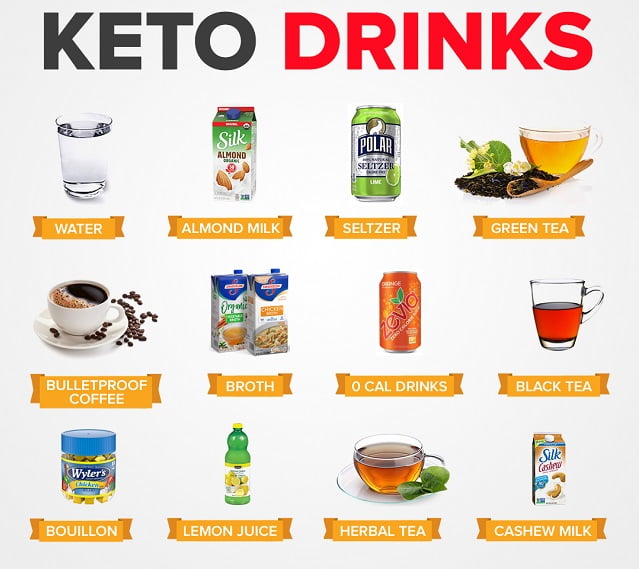
Here are some of the best low carb drinks that you can definitely consume together with your keto meals.
- Bulletproof coffee
- Decaf Tea
- Flavoured seltzer water
- Decaf coffee
- Water
- Herbal tea
- Lemon and lime juice (limit intake)
- Clear broth or bouillon
Sweeteners
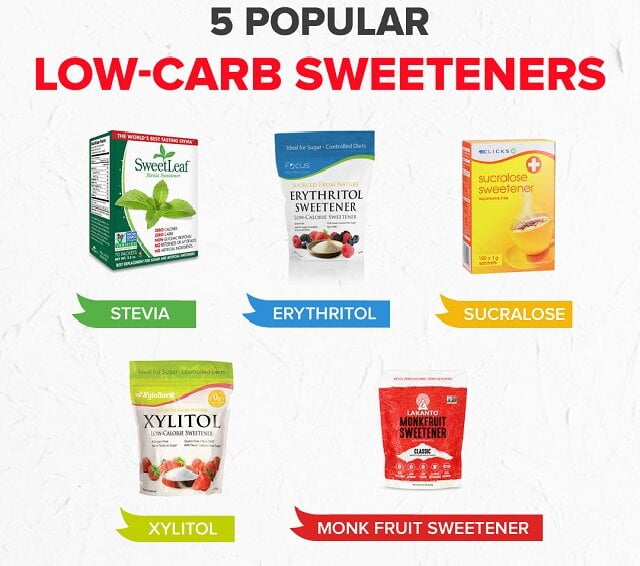
Some options of suitable sweeteners for a low-carb diet include:
- Erythritol
- Splendor-liquid
- Inulin and Chicory root
- Lo Han Guo
- Liquid Stevia
- Xylitol
- Swerve
Spices
Here are spices allowed on the keto diet:
- Sea salt
- Peppermint
- Ginger
- Basil
- Chili pepper
- Cloves
- Thyme
- Cilantro or coriander seeds
- Rosemary
- Black pepper
- Cumin seeds
- Oregano
- Turmeric
- Cayenne pepper
- Cinnamon
- Mustard seeds
- Parsley
- Dill
- Sage
However, there are foods you should avoid to achieve optimal ketosis as your body makes the switch from using glucose to synthesizing fats for ketones.
In the next section, we shall outline the foods you should avoid.
Food To Avoid On A Keto Diet
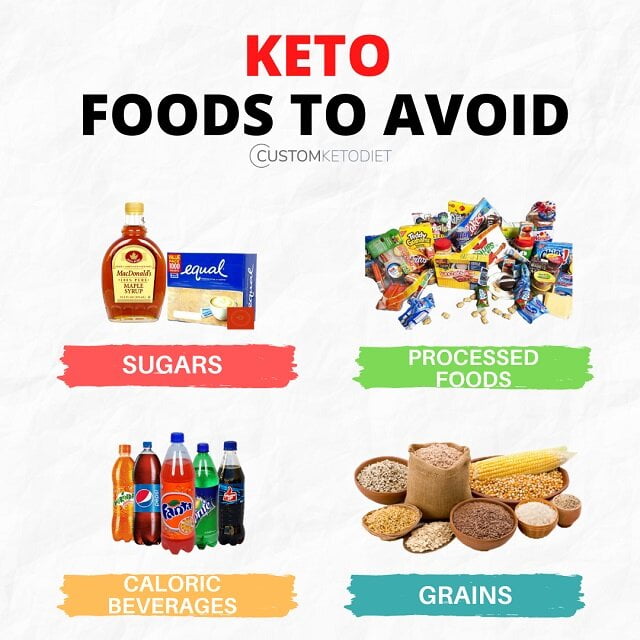
If you stick to the food listed in the previous section, you do not have to worry about not achieving optimal ketosis.
On the same note, as you increase intake of those foods, you should also be on the lookout for the following foods to avoid on a keto diet that may hinder ketosis:
Avoid all grains.
Avoid all grains, whole meal included (rye, wheat, oats, barley, corn, millet, rice sorghum and buckwheat).
Also, avoid all products made from grains; these include foods such as bread, crackers, pasta, pizza, and biscuits/cookies.
Avoiding all grains on the keto diet boils down to their high carbohydrate content.
Most grains, even whole grains, can easily push you over the strict carb limit (usually under 50 grams per day) needed to enter and maintain ketosis, the metabolic state where your body burns fat for fuel instead of glucose.
This can stall weight loss and other potential benefits of the keto diet.
While some low-carb grains exist, completely eliminating them simplifies meal planning and ensures you stay in ketosis.
Avoid refined fats and oils.
Avoid refined fats and oils like sunflower, canola, grape seed, corn oil, soybean, and Trans-fats such as margarine.
Refined fats and oils generally aren't ideal on keto for several reasons.
They often contain hidden trans fats, harmful compounds linked to heart disease.
Additionally, many are high in inflammatory omega-6s and low in omega-3s, disrupting the healthy balance in your body.
Moreover, their processing removes beneficial nutrients and antioxidants.
Opt for whole-food fats like avocado, nuts, and olive oil for a healthier, more nutrient-rich keto experience.
Avoid milk.
Avoid milk (only full-fat raw milk is acceptable).
Milk, with its natural sugar (lactose), is a high-carb intruder on the low-carb party of the keto diet.
Even unsweetened, one cup packs around 12 grams of net carbs, pushing you closer to your daily limit and potentially knocking you out of ketosis.
While occasional small portions are manageable with careful carb counting, it's generally best to stick to keto-friendly alternatives like unsweetened almond milk or heavy cream to keep your ketone train chugging along.
For coffee, replace milk with reasonable amounts of cream.
Avoid tropical fruits.
Avoid tropical fruits such as bananas, pineapples, mango papaya, etc., and some high carb fruit.
While tempting, most tropical fruits are off-limits on keto due to their high sugar content.
Each serving can easily blow your daily carb budget, kicking you out of ketosis and halting fat burning.
Think mangoes, pineapples, and bananas – delicious, but carb bombs.
Sticking to low-carb berries, melons, and avocados allows you to enjoy some fruity sweetness without derailing your progress.
Remember, it's all about finding ways to satisfy your cravings while keeping your carb intake in check.
Avoid fruit juice.
Avoid fruit juice
While fruit juice might seem healthy, it's a major no-no on the keto diet.
Packed with sugar and naturally low in fibre, it kicks your body out of ketosis, the fat-burning state key to keto success.
This sugar spike disrupts your metabolism, hindering weight loss and potentially raising blood sugar.
Plus, you miss out on the fiber and nutrients from whole fruits.
Stick to water, unsweetened tea, or keto-friendly smoothies for a refreshing drink that won't derail your keto journey.
Avoid factory-farmed pork and fish.
Avoid factory-farmed pork and fish
Factory-farmed pork and fish on keto can be a double whammy.
Not only are they often high in inflammatory omega-6s, disrupting the keto balance, but they may also contain antibiotics, environmental pollutants like PCBs and mercury, and hidden starches that can knock you out of ketosis.
Opting for grass-fed or pasture-raised meats and wild-caught fish ensures cleaner, healthier fats and aligns better with the keto focus on whole, unprocessed foods.
Avoid all artificial sweeteners.
Avoid all artificial sweeteners containing Aspartame, Sucralose, Saccharine, etc.
While some artificial sweeteners like stevia and erythritol are keto-friendly, others can hinder your progress. Some may raise blood sugar and insulin levels, potentially kicking you out of ketosis.
Additionally, studies suggest they may increase appetite and cravings, making it harder to stick to the low-carb plan. For optimal keto success, prioritise whole, unprocessed foods and limit artificial sweeteners, opting for keto-approved options sparingly.
Remember, it's all about keeping your body in fat-burning mode!
Avoid alcoholic sweet drinks.
Avoid alcoholic sweet drinks such as beer, and sweet wine.
Alcoholic sweet drinks are a double whammy on the keto diet.
They're packed with carbs, which can knock you out of ketosis and stall weight loss.
Plus, sugary mixers add empty calories and hinder your body's ability to burn fat.
Stick to pure spirits with low-carb mixers or dry wines to stay in ketosis and enjoy your occasional drink without sabotaging your progress.
Avoid Soy products.
Avoid Soy products
Soy on keto can be tricky. While some products are low-carb, others are hidden carb bombs.
High protein content can disrupt ketosis, and some people experience hormonal issues with soy's phytoestrogens.
Additionally, processed soy often sneaks in sugar, unhealthy fats, and unwanted additives.
Consider fermented soy like tempeh for potential benefits, but prioritize whole, low-carb alternatives for optimal keto success.
Now that you know what to eat and what to avoid, is there a way to guarantee faster adoption of ketosis?
The answer is yes.
The following section shows you such tips.
Tips and Tricks for Successfully Maintaining a Keto Lifestyle in a Busy World
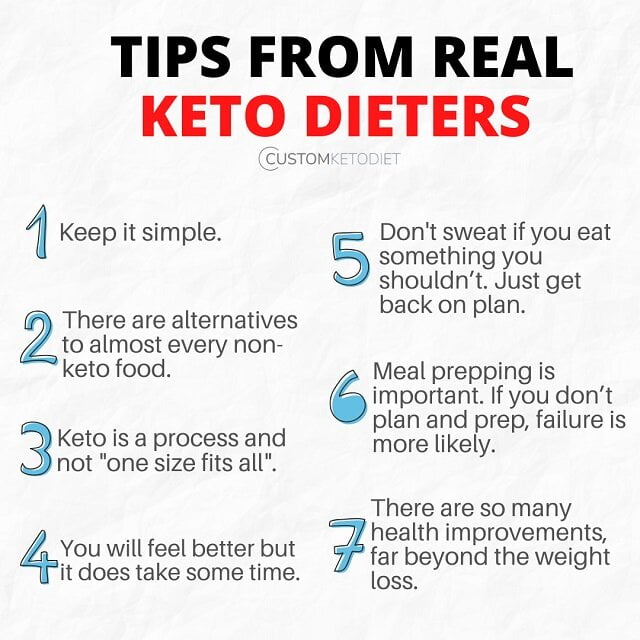
Are you a busy bee who wants to stick to your keto lifestyle? Fear not, because I’ve got some fantastic tips and tricks to help you maintain your keto diet even in the midst of a bustling world!
Validate yourself;
Getting some validation that the diet is actually working will be a great motivation to keep you on a diet considering the intimidating nature of the first few days of the diet.
Do not panic;
Be aware of the keto flu coming your way.
The dizziness, the irritability, and fatigue you will be feeling on the first three days may have you experiencing mood swings but don’t give in just yet.
Reward yourself with bacon and delicious keto friendly foods as you crave for carbs and sugars.
The craving will disappear as long as you’re full.
Consume more salt;
This is really important.
While on a keto diet, your body does not retain water as it normally would; hence, electrolytes like sodium quickly flush out of your body.
Therefore, you need constant replenishing; otherwise, you will feel awful. As indicated earlier, opt for sea salt.
Never open the door to hunger;
When you feel the tiniest bit of a hunger pang, immediately eat high-fat low-carb foods.
The moment you get too hungry, it forms the temptation pathway.
Remember: go simple;
Do not over plan things because when you do, you may end up making everything strict and less fun.
The keto diet is fun; keep it so.
Remember: this is not a high protein diet;
The keto diet is high fat, low carb, and moderate protein diet.
Moderate is the key word here.
Embrace the fat;
Eat fat to lose fat that is your new motto.
Do not shy away from the fat because it is your ticket to a healthier you.
Keto Diet Mistakes
Here are the common keto diet mistakes you should avoid.
Nobody is perfect, and no diet is perfect.
As you adopt this diet for good health and weight loss, you are bound to make several mistakes, this is normal.
The best way to avoid, or minimize the effects of mistakes is by learning and preparing for common mistakes.
Below is a list of common ketogenic diet mistakes that dieters make:
Eating Too Many Carbs;
There is no exact definition of what "low carb" means.
Some would say it is simply anything under 100 to 150 grams a day simply because they get amazing results with this range.
However, this may be excessive if your aim is to have plenty of ketones in your bloodstream.
Most keto dieters go for under 50-grams of carbs per day to get into optimal ketosis.
Anything beyond that is termed as excessive.
Eating Too Much Protein;
Remember: the keto diet is all about protein moderation.
Impatience;
As you adopt a keto diet, you need patience: patience to get into ketosis and patience to adapt to ketosis.
Understand that previously, your body’s main source of energy was carbs; now, it has to adapt to a new source of energy, fats.
The body requires time to do this; therefore, be patient.
Obsessing Over The Scales;
The number on your weigh scales should not determine your keto diet success.
Let this be the least of your worries.
Just live life and enjoy your diet.
Weight loss will happen; do yourself a favor and keep away from those scales.
Not Eating Enough Fats;
The unrestricted consumption of fats may seem excessive.
However, the keto diet is a high-fat diet. Just trust keto and enjoy the fat.
Remember, you should eat the right kind of fats, preferably monounsaturated and saturated fats.
Eating Processed Keto Foods;
When you are on a keto diet, always think about it this way:
the intention is to eat natural ingredients and not foods that come in wrappers such as Atkins bars and Quest bars.
Although you can occasionally eat these, the idea is for a large portion of your diet (we are talking about 70-80% of your entire diet) to consist of natural ingredients.
Being After A Quick Fix;
If this is your aim, do not start the diet. The Keto diet is more of a lifestyle change than a short-term diet plan.
Dropping a few kilos or pounds and then going back to your normal bad eating habits will be a waste of time.
Indecisiveness;
Half-heartedly adopting the keto diet could be the worst thing you could do to yourself because you are just wasting time.
If you are not all in, you will not survive through the temporary effects that come with adopting the diet.
Decide on what you want and think of everything you will gain by going keto to keep you motivated.
Delicious and Nutritious Keto Recipes to Keep You Satisfied and On Track
Get ready to tantalise your taste buds with some delicious and nutritious keto recipes that will keep you satisfied and on track with your low carb lifestyle!
Whether you’re new to the ketogenic diet or a seasoned pro, these mouthwatering dishes are sure to become staples in your keto meal plan.
From creamy cauliflower mash to zesty lemon garlic butter salmon, we’ve got a variety of keto-friendly foods that will make every meal a treat. Say goodbye to boring salads and hello to flavourful ketogenic cooking!
Not only do these recipes taste amazing, but they are also packed with the nutrients your body needs while keeping those carb counts low. You’ll be amazed at how satisfying and fulfilling these meals can be without sacrificing taste or enjoyment.
So get ready to embark on a culinary adventure with our collection of delicious and nutritious keto recipes.
Say goodbye to cravings and hello to a healthier, happier you!
Let’s dive in and discover the endless possibilities of ketogenic cooking together.
How to get started on the ketogenic diet.
If you want to skip the learning curve of keto and jump straight to the weight loss then this 8 week “done for you” keto meal plan is what you need!
Introducing “The Custom Keto Diet Plan” where ou can customise your very own keto weight loss plan based on your food preferences, stats and weight loss goals!
Best of all after you take this short quiz, your plan is available for immediate access, no waiting around for days until someone can manually draw up your plan.
Immediate access means you can start your weight loss journey TODAY and enjoy.
Here’s what you get in the Custom Keto Diet:
- Personalised meal plan tailored to your needs and goals.
- An eight-week meal plan created based on the expertise of certified nutritionists, personal trainers, and chefs.
- Meals that have calorie and macronutrient content tailored to your specific situation and goals.
- Meals that are based on personal food preferences to make your diet enjoyable and help you stay on track with your plan.
- Detailed recipes with step-by-step instructions to make meal preparation super simple (no prior cooking experience needed).
- A downloadable shopping list each week that details every needed ingredient you will need in the upcoming seven days.
- Options on how you can customise every meal even more to suit your taste buds.
- You will be shown what to eat every day to reach your goals in the fastest and most enjoyable way.
But that’s not all. Besides the low price, there is a robust and straightforward 100% satisfaction guarantee.
So try Your Custom Meal Plan Risk-Free and Judge for Yourself. If You’re Not Satisfied, You’ll Get All Your Money Back.
OR
Conclusion: Embrace the Power of the Keto Diet and Transform Your Life Today!
Are you ready to embark on a life-changing journey with the powerful Keto diet? Say goodbye to those unwanted kilos and hello to a healthier, more vibrant you! By embracing the power of the Keto diet, you can transform your life in ways you never thought possible.
The Keto diet has been proven to be effective in promoting weight loss, improving mental clarity, boosting energy levels, and even reducing the risk of certain diseases. With its focus on high-fat and low-carb foods, this revolutionary eating plan forces your body into a state of ketosis, where it burns fat for fuel instead of carbohydrates.
Imagine waking up each day feeling energized and confident as you watch the kilos melt away. No more restrictive diets or endless hours at the gym – with the Keto diet, you can enjoy delicious meals while still achieving your weight loss goals.
But it’s not just about shedding those extra kilos. The Keto diet also offers numerous health benefits that will have a lasting impact on your overall well-being. From improved heart health to enhanced brain function, this lifestyle change is truly transformative.
So why wait? Embrace the power of the Keto diet today and unlock a world of possibilities for yourself. With dedication and commitment, you can achieve remarkable results that will leave you feeling happier, healthier, and more fulfilled than ever before.
Don’t let another day go by without taking action towards a better future. Start your Keto journey now and discover just how incredible life can be when you choose to prioritize your health and well-being. Transform your life today – embrace the power of the Keto diet!
« Cooking Definitions
